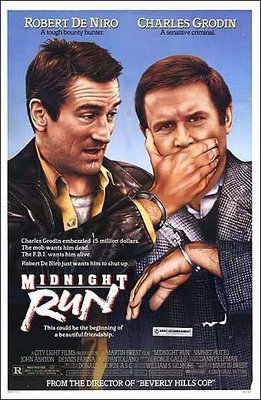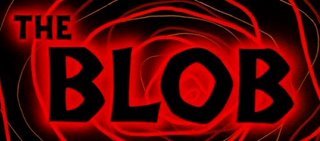
Sunday, June 18, 2006
Sunday, June 11, 2006
The Blob (1958)

Stuart's Nite
Bruce Kawin via the awesome The Criterion Collection:The horror and science fiction films of the 1950s were always in search of new monsters. A teenage werewolf was a compromise, targeting the new audience with a variation on an old idea. The original creations made their pictures unforgettable: Invaders from Mars (1953), Creature from the Black Lagoon (1954), This Island Earth (1955), The Fly (1958).
Unlike most monsters of the period, the Blob has no humanoid element. It has a will—to consume flesh—and it moves in search of victims; that is what passes for the Blob’s character, and the simplicity of the concept makes the Blob an especially formidable and memorable Thing. It came from the stars. It dissolves flesh on contact. As it absorbs people, it gets bigger and turns red with their blood. It can flow under or around any obstacle. It can’t be killed. It is a monster of appetite: an absolute consumer, voracious, growing. And it hates cold.
Irvin Yeaworth(1926–2004). American director and producer. Via Gary Westfahl:The son of an ordained minister (but never a minister himself, despite some accounts), he was reportedly a radio performer as a child, and a radio and television producer as an adult. He first achieved a modicum of prominence in the 1950s as the head of a small Pennsylvania company, Valley Forge Films, producing noncommercial short subjects on religious themes; he had also by this time been credited as the producer and director of The Flaming Teen-Age (1956), an obscure teen exploitation movie with a devotional spin. One of his works must have been pretty impressive, for it inspired New York producer Jack H. HARRIS to invite Yeaworth to direct a cheap science fiction film for general release. In response to this odd opportunity, the devout Yeaworth surely prayed earnestly for divine guidance, and the Lord, once again displaying His infinite wisdom, advised him to accept the assignment.
For what emerged from the unlikely collaboration of Yeaworth and Harris was The Blob—perhaps not one of the best, but surely one of the most distinctive and memorable science fiction films of the 1950s. Its amorphous, pulsating silicone represented an original variation on the monster-from-space theme, and filming on location in Pennsylvania allowed Yeaworth to effectively employ unusual settings like the railroad-car diner and the small-town movie theatre where the Blob oozes menacingly towards the audience. Yeaworth also had a flair for innovative camera work, as in the scene in a store where stars Steve McQueen and Aneta Corseaut are strangely filmed from a disconcerting low angle; then, relating this to the image of the Blob slithering across the floor, we suddenly realize that we are being given a Blob's-eye view of the proceedings.
Most impressively, unlike almost every other teenagers-versus-monster movie of the era, The Blob insists upon treating its youthful protagonists with the utmost respect; the brilliantly cast McQueen and Corseaut may be inexperienced, but they are keenly observant—more so than the film's adults—and they take the responsibilities thrust upon them very seriously. Amidst scores of crudely made films that sought to extract money from teenagers' pockets while portraying them as fools, The Blob almost uniquely imbues its teenagers with a gawky gravitas that would not be observed again in American films until, perhaps, George LUCAS's American Graffiti. Just about Yeaworth's only misstep was his use of Ralph Carmichael's jarringly inappropriate, jazzy score which not only failed to enhance the film but was sometimes at cross purposes to it, as in the scene where McQueen and Corseaut contemplate their impending deaths to the accompaniment of soft, romantic music.
Behind the scenes via Hollywood Gothique:
The production story behind the original is almost as interesting as the film itself. It all started when Irvine H. Millgate met Jack H. Harris, a distributor who wanted to become a producer. "He [Millgate] was head of visual aids for the Boy Scouts of America," said Harris. "They had made a feature film, and they asked me to be consultant on the national distribution."While promoting the film, Harris and Millgate toured the country together. "On our trips, we would talk about the great movie that I was gonna make one day, because that's what I wanted to do," recalled Harris. “Millgate said, ‘What is your formula?’ I said, ‘It's gotta be a monster movie. It's gotta be in color instead of black?and?white. It can't be a cheapy?creepie -- it’s gotta have some substance to it. It's gotta have characters you can believe in. And there's gotta be a unique monster -- never been done before. And the method of killing the monster would have to be something that grandma could have cooked up on her stove.’”
With those specifications in mind, Millgate went to work. Almost a year later, Harris was awakened one morning by a long-distance phone call from an excited Millgate. “He said, ‘I've got it -- I’ve got it -- Oh Lord, I've got it! THE MOLTEN METEOR!' I asked, 'What the hell's that?' He said, 'A mineral form of life that consumes human flesh on contact.' I said, ‘That sounds good, but how do we do it in?’ He said, 'You can't burn it; you can't reduce it with acid; you can't shoot it. There’s only one thing you can do: freeze it -- makes it immobile.' So that was the basic notion."Millgate developed this notion into a treatment, which Harris took to Valley Forge Films, a production company in suburban Chester Springs, Pennsylvania, headed by Irvin S. ("Shorty") Yeaworth, Jr. Under Yeaworth's direction, Valley Forge Films had made hundreds of low?budget TV shows and numerous 16mm films. Along with producer Lou Kellman (The Burgler), Yeaworth had been trying to co-produce a feature, but they were unable to raise financing for a script they had developed -- “a Bridie Murphy kind of situation,” according to Yeaworth. The real-life case of a woman who became famous for allegedly recalling past lives under hypnosis had led to a brief vogue with reincarnation, but other films had already cashed in (e.g., Roger Corman’s THE UNDEAD in 1957). When Kellman approached his friend, distributor Jack Harris, for help raising money, Harris suggested making THE MOLTEN METEOR instead.
Although initially reluctant, Yeaworth eventually decided that science-fiction might not be a bad genre for a feature debut. “Science-fiction wasn’t where we lived,” he recalled. “We were not buffs, but it was a safe area for a first venture. We knew we weren’t ready for a serious dramatic film.”A screenplay was developed from Millgate’s treatment. The script went through several drafts at Valley Forge, including uncredited input from the director’s wife, Jean Yeaworth, with a final draft credited to Theodore Simonson and actress Kay Linaker (who had written “Scandal at Peppernut,” an episode of The United States Steel Hour, under her pen name, Kate Phillips, in 1955).
“Ted worked with us on story,” Harris recalled. “With all due respect, I think he supplied more of a plot. I kept throwing in what I needed in the way of thrills. Once he did that, we hired Kate Phillips, who was an established writer, and she put the finishing touches on it.”Months of pre-production went into preparing the film so that it could be complete on its limited budget. Harris felt that intense advance planning was the key to keeping the budget in check. "To me the most important part is preparation – that’s where it all happens. We had about three-and-a-half months preparation, besides story development. [It was] the best-prepared movie I've ever done; I thought they were all that way. I've found out since that time, they ain't all that way."
It was not until the second day of shooting that Harris learned he had cast a twenty-seven-year-old actor as a nineteen-year-old character. “The director came up to me and said, ‘You see – he’s twenty-seven!’ So I said, ‘Shut up and direct the movie!’ McQueen was a pain in the ass, but – boy – I’ll take that pain any time I can get it. He did a helluva a job. But it was very easy for me: Yeaworth had to work with him; I didn’t. But Yeaworth was happy once he saw the film cut together.”For the most part, filming was an exercise in achieving results with very little. Luckily, the crew was willing to put in a maximum amount of effort for a minimum amount of money. "We were interested in the progress of our studio; therefore, we were all really participants in the project, even though we're not participants in the profits,” said Spalding.
Shooting was a grueling experience involving many twenty?hour days, often six or seven days a week, in order to cut down on equipment rental expense. Said Spalding, "We already owned the lights and sound stages and bad built all the sets; it was all our equipment except the cameras. None of us had ever shot a full?length feature. I'd been shooting quite a while, all 16mm. I'd never operated a 35mm camera, never used a gear head. Three weeks later, we had the basic film shot; then we started doing the special effects.
Subscribe to:
Comments (Atom)

